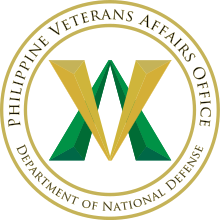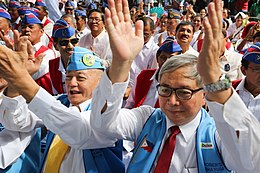
"Lupang Hinirang", originally titled in Spanish as "Marcha Nacional Filipina", and commonly and informally known by its incipit "Bayang Magiliw", is the national anthem of the Philippines. Its music was composed in 1898 by Julián Felipe, and the lyrics were adopted from the Spanish poem "Filipinas", written by José Palma in 1899.

The president of the Philippines is the head of state, head of government and chief executive of the Philippines. The president leads the executive branch of the Philippine government and is the commander-in-chief of the Armed Forces of the Philippines.
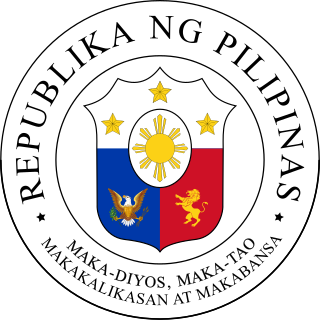
The Cabinet of the Philippines consists of the heads of the largest part of the executive branch of the national government of the Philippines. Currently, it includes the secretaries of 22 executive departments and the heads of other several other minor agencies and offices that are subordinate to the president of the Philippines.
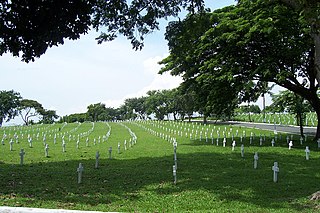
Libingan ng mga Bayani is a national cemetery within Fort Andres Bonifacio in Taguig City, Philippines.
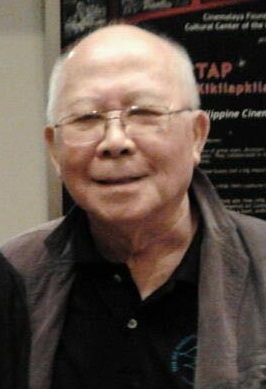
Bienvenido L. Lumbera was a Filipino poet, critic and dramatist. Lumbera is known for his nationalist writing and for his leading role in the Filipinization movement in Philippine literature in the 1960s, which resulted in his being one of the many writers and academics jailed during Ferdinand Marcos' Martial Law regime. He received the Ramon Magsaysay Award for Journalism, Literature and Creative Communications in 1993, and was proclaimed a National Artist of the Philippines for literature in 2006. As an academic, he is recognized for his key role in elevating the field of study which would become known as Philippine Studies.

Lauro "Larry" Zarate Alcala was a well-known editorial cartoonist and illustrator in the Philippines. In 2018, he was posthumously conferred the National Artist for Visual Arts title and the Grand Collar of the Order of National Artists.
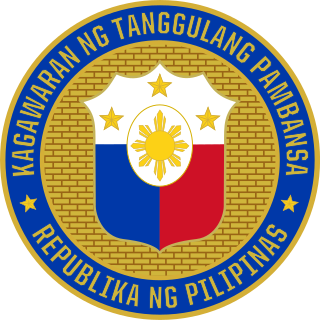
The Department of National Defense is the executive department of the Philippine government responsible for guarding against external and internal threats to peace and security in the country. The Department of National Defense exercises executive supervision over the Armed Forces of the Philippines (AFP), the Office of Civil Defense (OCD), the Philippine Veterans Affairs Office (PVAO), the National Defense College of the Philippines (NDCP), the Government Arsenal (GA), and Veterans Memorial Medical Center (VMMC). It is also responsible for disaster preparation and management in the country.
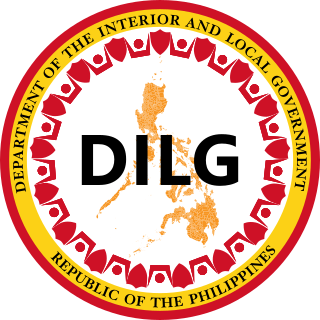
The Department of the Interior and Local Government, abbreviated as DILG, is the executive department of the Philippine government responsible for promoting peace and order, ensuring public safety and strengthening local government capability aimed towards the effective delivery of basic services to the citizenry.

The Philippine Sports Commission is an agency of the Philippine government which tackles matters concerning sports in the country. The sports agency is independent from the Philippine Olympic Committee which enjoys autonomy from the government.

The Court of Tax Appeals is the special court of limited jurisdiction, and has the same level with the Court of Appeals. The court consists of 8 Associate Justices and 1 Presiding Justice. The Court of Tax Appeals is located on Agham Road, Diliman, Quezon City in Metro Manila.

The Veterans Memorial Medical Center was established in 1955 with full US Government assistance under the US Veterans Administration to provide quality hospitalization, medical care and treatment to Filipino veterans as provided by U.S. public law. The patients were originally those who suffer from service-connected disabilities arising from their services with the USAFFE, recognized guerrilla units, Philippine Scouts, and Philippine Commonwealth Army, which was later extended to AFP retirees and their dependents.

The Rescission Act of 1946 is a law of the United States reducing (rescinding) the amounts of certain funds already designated for specific government programs, much of it for the U.S. military, after World War II concluded and as American military and public works spending diminished.

The Liga ng mga Barangay sa Pilipinas and the Asosasyon ng mga Kapitan ng Barangay are formal organizations of all the barangays in the Philippines. Presently, almost 42,000 barangays are part of this organization, making it the association of Philippine local government units with the largest membership.

Fortunato Ubongen Abat was a Filipino major general who served as the 20th Secretary of the Department of National Defense (DND), Ambassador to the People's Republic of China, and Commanding General of the Philippine Army.
Vicente "Vic" Sumajit Santos Jr. was a colonel of the Philippine Army – Armed Forces of the Philippines (AFP). He is the author of several military books and other publications, as well as the founding president of Kapatiran ng mga Kawal na Makawikang Pilipino (KAKAMPI).
Communism in the Philippines emerged in the first half of the 20th century during the American Colonial Era of the Philippines. Communist movements originated in labor unions and peasant groups. The communist movement has had multiple periods of popularity and relevance to the national affairs of the country, most notably during the Second World War and the Martial Law Era of the Philippines. Currently the communist movement is underground and considered an insurgent movement by the Armed Forces of the Philippines.

Protests against Former President Rodrigo Duterte escalated on November 18, 2016, following Duterte's support of the burial of the late president Ferdinand Marcos. These series of protests are mostly conducted by progressive groups and other opposing figures mainly due to the ongoing war on drugs, the declaration of martial law in Mindanao, and employment issues such as contractual terms being applied by companies and inflation which occurred due to the passage of the Tax Reform for Acceleration and Inclusion Law. Other causes of the protests include the government's response to the COVID-19 pandemic in the country, the passage of the Anti-Terrorism Act of 2020, and the shutdown and franchise denial of ABS-CBN.
Juan Feleo was a Filipino peasant leader and politician. He was one of the founders of one of the Philippines' leading peasant groups, the Kalipunang Pambansa ng Magbubukid sa Pilipinas and a top-ranking member of the Partido Komunista ng Pilipinas. He was also involved in the HUKBALAHAP, and his death sparked the subsequent Huk Rebellion.

The following is a timeline of protests against Rodrigo Duterte, the 16th President of the Philippines, and his policies. Issues were addressed in the protests including the war on drugs, employment issues, anti-terror law, and the government's response to the COVID-19 pandemic.
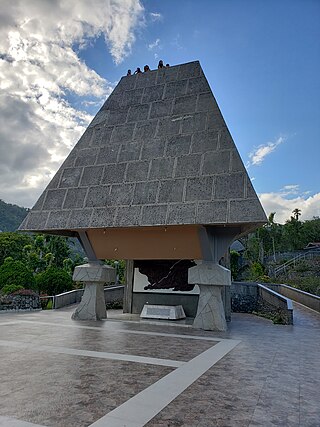
The Kiangan National Shrine also known as the Yamashita Shrine is a war memorial in Kiangan, Ifugao, Philippines. It commemorates the surrender of the top commander of Japanese Imperial Army in the Philippines General Tomoyuki Yamashita to the Allied forces, which led to the end of the Japanese occupation of the archipelago during World War II.
